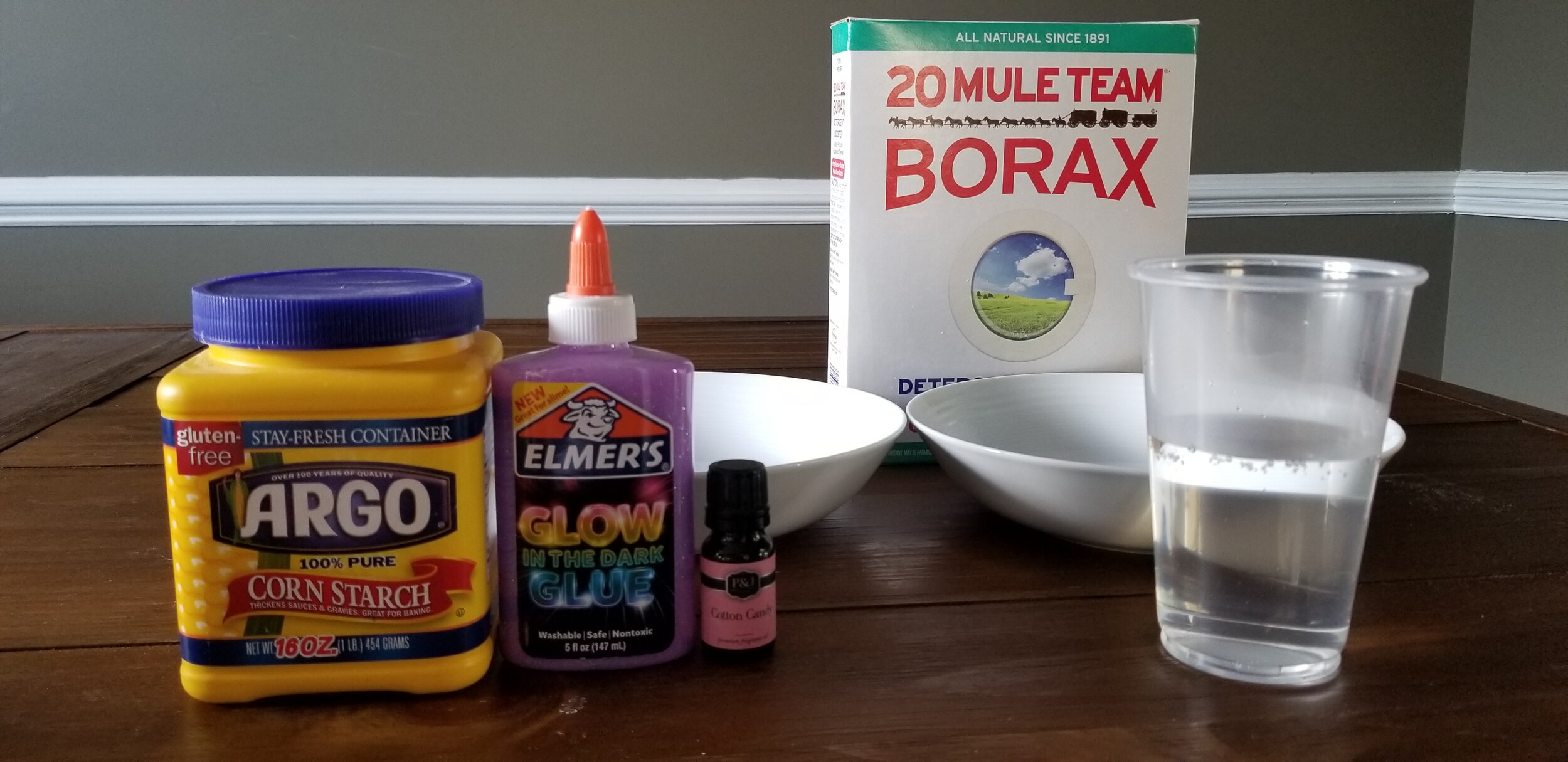Bouncy Balls!
Gentle Disclaimer: Children must be supervised at all times by a parent during STEMSpark experiments. We may use materials or ingredients in our experiments that can stain surfaces or clothing, be messy, or slippery. Please be careful and make sure no experiments are put in the mouth and kept away from children under 3. Bouncy balls may be a choking hazard.
Materials:
1 cup of warm water
1 tbsp borax
1 tbsp cornstarch
2 tbsp Elmer’s Glue
Optional but recommended:
Food Coloring
Gloves, especially for children with sensitive skin!
Directions:
In a small bowl, mix water and borax
In a second small bowl, mix Elmer’s glue and cornstarch.
Using two primary colors (red, yellow, and blue) add four drops of each color into the glue mixture. Have your child predict what color the mixture will be. Using your hands, knead the cornstarch into the glue, mixing well.
Have your child explore the glue and cornstarch mix. What does it feel like? Does it have a smell?
Have your child predict what will happen when you combine the glue solution and Borax mixture. Move the glue mixture into the water. Allow the materials to sit for two-three minutes as it hardens.
Note: If your materials are not hardening, use your fingers to flatten the glue. Increasing the surface area exposed to the Borax solution should speed up the process. If you are making a large bouncy ball, you may need to do this step as well.
Remove the slime-like material from the water and roll in your hands to harden.
Run the ball under warm water for about a minute
Place ball into a plastic baggie to dry. Leave for about 10-15 minutes.
Bounc
Examining the Experiment
This experiment includes a physical change and a chemical change. Can you identify which is which?
Physical Change:
Physical change is when you have changed the appearance of a substance, but you have not changed the chemical structure of it. This includes actions such as ripping, breaking, cutting, dissolving, melting and freezing. Physical changes are reversible and did not produce any new sounds, smells, or substances.
Chemical Change:
Chemical changes are the opposite. You have changed the appearance of a substance, but more importantly, you changed the chemical structure of it. Signs of a chemical change include color changes, new smells, bubbling, or new noises such as hissing or crackling. Chemical changes are not reversible and they often produce new sounds, smells, or substances.
Things to Try
What do you think will happen with colder or warmer water? Swap the warm water in this experiment for cold, room-temperature, and hot water (be careful with this one!) and observe the effects that water temperature has on how slowly or quickly the mixtures set
How can you make your ball bouncier? Play around with the amount of glue and borax you use in the experiment. Be sure to only change one variable (either the water temperature, the amount of glue, or the amount of borax) so you can draw conclusions about which variable is responsible for the bounce!
Instead of a ball or sphere, what would happen if you changed the shape of your bouncy creation? Make one ball, one square and one shape of your own design and test which shape bounces the best! Record your observations and create a hypothesis about why shape influences its ability to bounce!
Fun Supplements:
Use glow-in-the-dark glue or glitter to personalize your bouncy ball. If you use Elmer’s Glow-in-the-Dark glue, your ball will need to harden for a longer period of time in the Borax solution
Add essential oils such as lavender to make your bouncy ball a sensory aid, or just to enjoy the smell!


